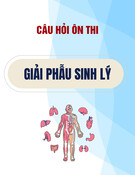
JOURNAL OF 108 - CLINICAL MEDICINE AND PHARMACY Vol. 19 - Dec./2024 DOI: https://doi.org/10.52389/ydls.v19ita.2516
82
Amyloidosis of the colon mimicking an acute ulcerative
colitis flare: A case report
Nguyen Thi Phuong Lien*, Dinh Thi Nga,
Phan Thi Thanh Long, Pham Duy Hoang,
and Nguyen Lam Tung
108 Military
Central Hospital
Summary
The 2 most common types of amyloidosis are light chain (AL) that is associated with plasma cell
dyscrasias and reactive (AA) that is associated with chronic inflammatory conditions. We report a 65-
year-old man who presented with recurrent bloody diarrhea and anorexia that had been misdiagnosed
as an ulcerative colitis (UC). Colonoscopy and detailed physical examination revealed features suspicious
for amyloidosis. Bone marrow aspiration showed multiple myeloma and AL amyloidosis. This case
demonstrates the importance of generating a broad differential and the pivotal role of physical
examination and endoscopic findings in diagnosing uncommon diseases.
Keywords: Ulcerative colitis, amyloidosis, reactive amyloidosis, light chain amyloidosis.
I. BACKGROUND
Amyloidosis is a rare disorder that is caused by
the extracellular deposition of abnormal protein
fibrils in various organs and tissues. There are 6
types of amyloidosis: primary, secondary,
hemodialysis-related, hereditary, senile, and
localized1. The two most common forms of
amyloidosis are light chain amyloidosis (AL)
associated with multiple myeloma and reactive
amyloidosis (AA) associated with rheumatois athritis,
inflammation bowel diseases and chronic infection2.
II. CASE PRESENTATION
A 65-year-old man presented with recurrent
bloody diarrhea for a few months, painful mouth,
anorexia and weight loss 5 kilogrammes per month.
He was admitted to Institue of Gastroenterology and
Hepatology, 108 Military Central Hospital. His
medical history was no significant except COVID-19.
Laboratory tests showed mild anemia of 126g/L, low
Received: 10 October 2023, Accepted: 27 December 2023
*Corresponding author: bslien108@gmail.com -
108 Military Central Hospital
serum protein and low serum albumin (50g/l and
31g/l), but no hypercalcemia and no renal
dysfunction were present. Colonoscopy and
pathology finding were chronic colitis and PCR
positive for CMV. He had the initial diagnosis of UC
complicated by Cytomegalovirus infection. The
mesalazine and ganciclovir was started and he was
discharged home with an oral regimen.
The patient, however, came back two months
later without any clinical success. He complained
more anorexia, mouth painful and fullness, bilateral
hands tingling and paresthesia. Detail physical
examination was notable for macroglossia and oral
tongue ulcer (Figure 1), bilateral carpal tunnel
syndrome which were highly suggestive of systemic
amyloidosis. Abdominal and pelvic computed
tomography showed mild acites, dilation of hepatic
vein and bowel colon thickenning. Colonoscopy was
performed to assess the severity of the disease and
exclude infectious etiologies such as
Cytomegalovirus and Clostridioides difficile. Mild
inflammation was found along the colon. Multiple
biopsies were taken from these sites. On withdrawal
of the scope, friable mucosa with submucosal







































